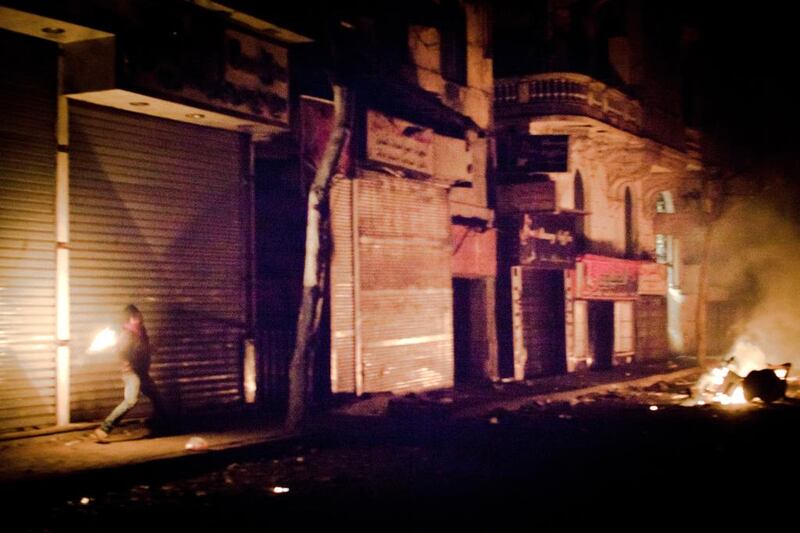In her preface to Cairo: My City, Our Revolution, the Egyptian novelist and political commentator Ahdaf Soueif explained how during the 2011 uprising in Tahrir Square she tried to "revolute" and write about the unfolding drama. "For this book to be as I wanted it to be and believed it should be, an intervention rather than just a record, it needed to take in – and on – as much of this present as possible."
Soueif’s son, Omar Robert Hamilton, has also written a book about Cairo and Egypt’s revolution, and it too feels more like an intervention than a record. In addition it feels fresh, current, topical – a recent eyewitness account, a newly lived-through upheaval.
This is no small feat for The City Always Wins which comes with two inbuilt distancing effects: it is a novel, and as such its facts are not merely presented but processed; and it appears six years after the events it describes. But with great skill and purpose, and employing the immediacy and urgency of the present tense, Hamilton transports us into the eye of the storm to thrillingly experience history as it happens, and to share the hopes, ideals and eventual heartbreak of an entire movement.
The book starts in October 2011 with a brief but memorable scene of horror, mayhem and desperation. A peaceful march to Maspero, the state television and radio building, ends in bloodshed: “The army opened fire. No hesitation. They crushed people under their tanks.” Dead bodies pile up in the hot corridors of the Coptic Hospital. The morgue is full. They should be buried now, someone says. Another voice speaks up, disagreeing: “if we have no autopsies, no proof, the army will deny everything.” Autopsies are needed “for justice”.
Hamilton pans out and introduces his justice-seekers. Chief among them are Mariam and Khalil, who along with other young activists run Chaos, a magazine, website and podcast which collects and spreads "news and tactics and triumphs". Chaos expands, with more volunteer journalists, translators and photographers joining its ranks as a response to intensified unrest. Hamilton's characters protest, protect and fight back; they stage public screenings of atrocities ("Forget cinema. This is cinema"), search for missing people and collect the stories of the dead.
Elections loom but offer little in the way of resolution: "The ballot box exists to quell the revolution. Democracy is always for sale to the highest bidder." The Mohamed Morsi regime proves equally corrupt and heavy-handed, and has the Chaos staff doubling their efforts to win both the media war and the fight on the streets.
Gradually, Hamilton shows how that determined fight turns into a losing battle. Activists are hunted down and rounded up, Chaos is compromised, and Mariam and Khalil's commitment – to the cause and to each other – is tested.
The City Always Wins is an electrifying read, its every thought, act, scene and description rendered in vivid, graphic, adrenaline-charged prose. The titular city pulses on the page. "Cairo is jazz," Hamilton declares, "all contrapuntal influences jostling for attention, occasionally brilliant solos standing high above the steady rhythm of the street."
It is also an “unending city of sores and scars and needs that will never be sated”. At times Hamilton gets too carried away: ideas are rattled off with list-like monotony (“it’s all the same, same animal urges, same violence of hands, same paunching weight…”); righteous anger boils over into tub-thumping polemic.
But these inconsistencies aside, it is impossible not be carried along by the novel’s kinetic energy and moved by its emotional clout. Hamilton is a writer but also an award-winning filmmaker, and there is a distinct filmic quality to his set-pieces. Riots and demos pan out in long extended sweeps, as if captured in one unbroken and unedited take. Turmoil in hospitals is conveyed in a series of jerky jump-cuts. The focus is grainy, the action visceral. If docufiction was not a recognised film genre it could be used to categorise Hamilton’s unique storytelling.
Just as original is the book’s patchwork structure. Hamilton’s narrative comes embroidered with texts, tweets, chants, slogans, quotes, lyrics, headlines, testimonies, graffiti, Facebook messages and even sound effects, all of which enhance the general air of authenticity. What makes the novel truly realistic, however, is the two main characters. We listen to their convictions, follow their plans, then watch with bated breath as they advance into clouds of tear gas.
Hamilton’s stunning debut is both a defiant fist in the air and a sucker-punch to the gut. Despotism and optimism have seldom been so powerfully portrayed.
Malcolm Forbes is a regular contributor to The Review.





